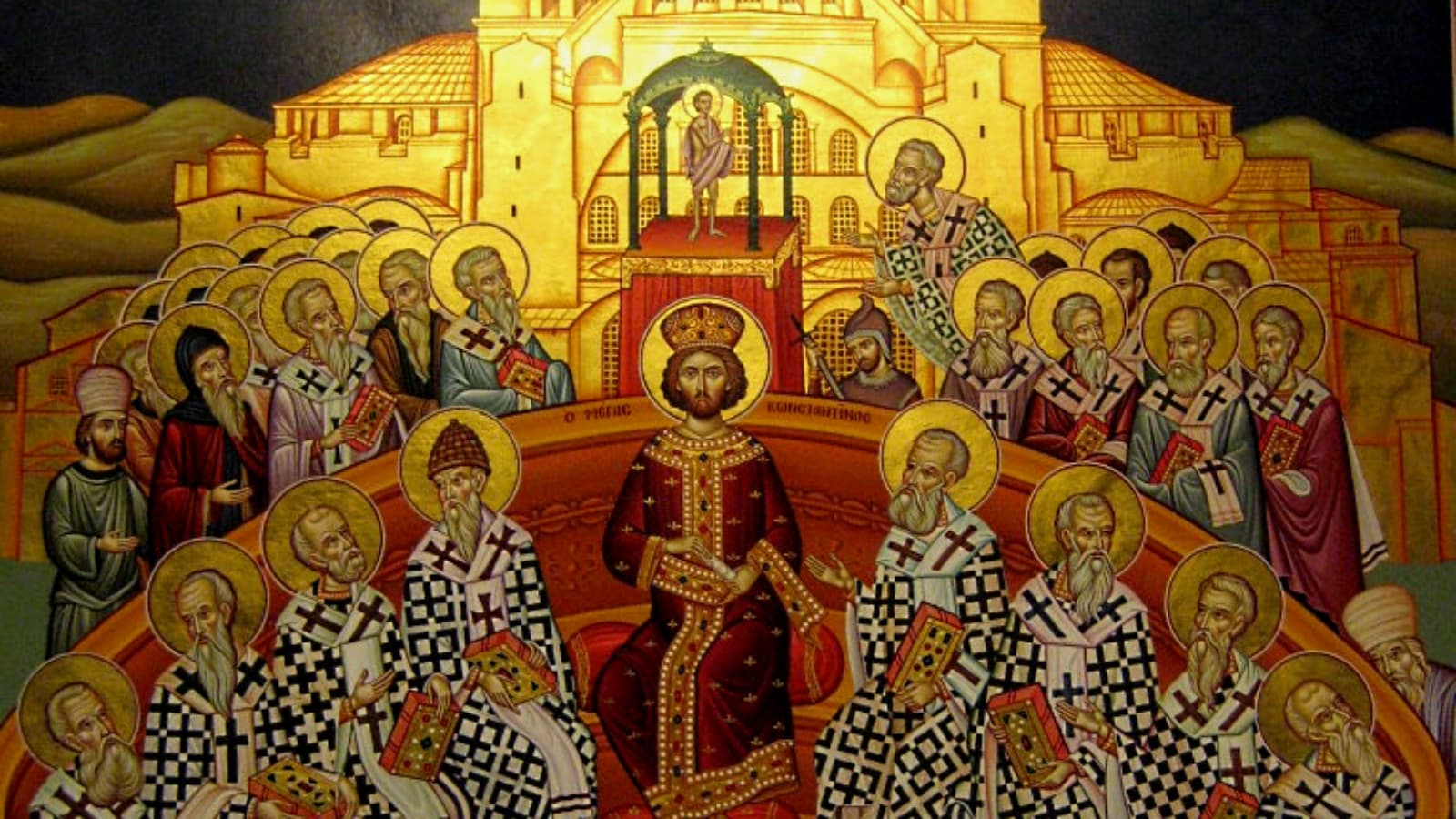The First Ecumenical Council, convened in Nicaea in 325 AD, is an important event in the history of the Eastern Orthodox Church. So important, in fact, that the Orthodox Church commemorates it every year on the 7th Sunday after Great and Holy Pascha. Called by Emperor Constantine, this momentous assembly of bishops addressed critical disputes within Christianity. Most notably, the contentious teachings of Arius posed a serious threat to the unity and integrity of the early Church.
4 minutes
Historical context for the First Ecumenical Council
In AD 313, the Edict of Milan legalized Christianity in the Roman Empire and granted Christians the right to practice their Faith freely. As the Faith continued to spread, diversities in belief and praxis began to surface among the various churches. One of the most pressing issues the churches grappled with was the nature of Christ. Was He human, divine, or both? And if so, how could such a thing be possible?
Arius, a priest from Alexandria, asserted that the Son of God was a created being, distinct and subordinate to God the Father. Arius’s views gained traction quickly among many Christians, alarming several bishops and theologians. While this teaching may seem like an abstract issue, it has profound implications for the relationship between God and humanity. For if Jesus were not truly Divine, the promise of salvation through Him would no longer be capable of bridging the gap between humanity and God. His death would have been meaningless.
In June 325 AD, the Emperor Constantine convened the Council of Nicaea in the city of Nicaea (modern-day İznik, Turkey). This gathering of around 300 bishops was marked not only by theological debate but also by the political realities of the time. Constantine sought to unify Christian doctrine, as he believed this would lead to a unified Empire. The council featured exhaustive discussions and arguments on several topics, with various factions representing differing views. Notably, Saint Athanasius, the future patriarch of Alexandria, emerged as a staunch opponent of Arianism, articulating the orthodox position with clarity and passionate conviction.
Related Reading: Quick Facts About the 7 Ecumenical Councils
Formulation of the Nicene Creed
The First Ecumenical Council formulated the Nicene Creed, the statement of faith that has become the foundation for Christian orthodoxy. The Creed affirmed Jesus Christ is “true God of true God,” “begotten, not made, of One essence with the Father.” These phrases establish a clear stance on the nature of the Trinity. Moreover, they emphasize the co-eternity and co-equality of the Son with the Father, thereby addressing the core issues raised by Arianism.
The Council also declared anathema against Arius and his teachings, which helped solidify the council’s authority in defining orthodoxy. While some bishops, fearing for their positions or influenced by Arius’s supporters, were reluctant to accept the harsh measures against Arianism, the majority ultimately recognized the importance of confronting heresy to safeguard the faith.
The legacy of the First Ecumenical Council
After the First Ecumenical Council, Christian communities across the empire adopted the Nicene Creed. However, Arianism persisted and attracted supporters in certain areas. This led to ongoing tensions and additional councils in subsequent decades. The Eastern Orthodox Church recognizes these subsequent councils, as they further defined and defended the Christological doctrines that originated at Nicaea.
The Council of Nicaea did far more than simply help the Church formulate Her dogmas. This Council marked a pivotal shift in how Christian leaders viewed unity within the Church and the role of ecumenical councils in resolving theological disputes. Moreover, it serves as the Church’s model for maintaining doctrinal integrity and unity, reminding us all that matters of Faith require communal discernment within the whole of the Body of Christ.
For Eastern Orthodox Christians, the First Ecumenical Council is a testament to the Church’s commitment to truth. The Creed serves as our framework, allowing us to articulate our Faith in an ever-changing, relativistic world. Indeed, the Creed is central to Eastern Orthodox worship and liturgy; we recite it during many of our services to reinforce our shared belief, affirming that which has been proclaimed through the centuries by those who came before us.
Upholding Orthodoxy
In summary, the First Ecumenical Council was not just a historic gathering of bishops. This Council epitomized a divine confluence of faith, reason, and communal decision-making that safeguarded the essence of Christianity. The proceedings of Nicaea reflect the workings of the Holy Spirit, helping the Church preserve the Truth amidst heresy. The commitment to uphold the Faith, to preserve it unaltered, requires us to stand firm against heresy. This commitment remains as vital today as it was in the early centuries of Christendom. The lessons we learn from the Fathers of the First Ecumenical Council remind us of the profound truth contained in our shared beliefs and the need for unity in faith and practice.
Keep Reading: Does the Second Commandment Forbid Icons?

